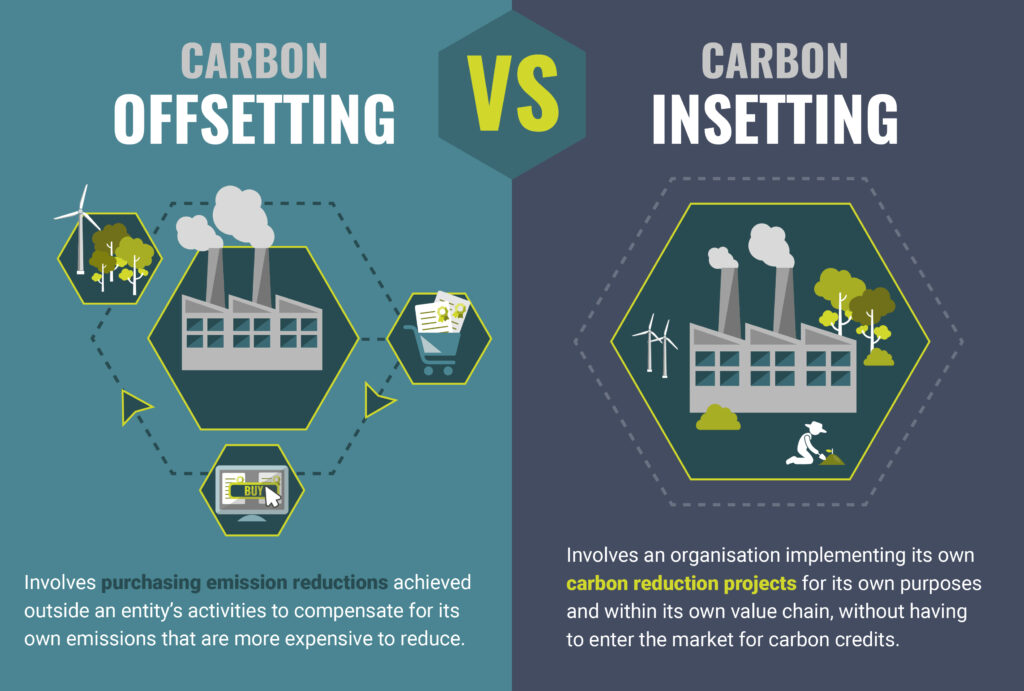SUPPLY CHAIN: CARBON OFFSETTING & INSETTING
Offsetting and insetting are primarily for businesses on a journey to Net Zero. It is unlikely that energy upgrades and renewable energy projects will eliminate all scope three emissions, and this is where offsetting and insetting can used to reach carbon targets.

Source: CarbonWise, ‘Carbon Offsetting vs. Carbon Insetting, (https://carbonwise.co/carbon-offsetting-vs-carbon-insetting/)
OFFSETTING
INSETTING
Offsetting should be used as a bridge to net zero once all insetting opportunities have been taken advantage of. Offsetting is financing projects to sequester carbon. In return, carbon credits get exchanged to offset residual carbon.
The SBR primarily focuses on insetting. Insetting is reducing your emissions internally through energy improvement measures and upgrading to renewable energy. Supply chains are still part of insetting and count within scope 3, reducing another organisation’s scope 1 and 2 will help reduce scope 3.
We work with The Biosphere Enterprise, which has set up The Natural Capital Market place to trade local carbon credits. Find out more.
For example, a business invests in a more efficient boiler for a supplier which decreases the supplier’s scope one emissions. The business can then deduct that reduction from their scope 3 carbon footprint.
BENEFITS OF
OFFSETTING
INSETTING
- There is less work required within your organisation to get other stakeholders involved as it will be outsourced to a company.
- It will prevent land from being developed on which is great for the natural environment and biodiversity.
- Helps source an income for the individuals or businesses focusing on natural solutions of carbon sequestration.
- This is ethically a great thing to do as you are helping smaller businesses within the supply chain. This also helps your company’s as it improves the security of the people supplying to your organisation.
- Investing in an energy improvement measure is an almost instant change to your carbon emissions whereas offsetting can take longer to go through the credit process which is still being established.
- Identifying the best areas to inset carbon requires most organisations to carbon report. They might be willing if they have potential investment.
DISADVANTAGES OF
OFFSETTING
INSETTING
- A lot of larger organisations buy carbon credits without trying to inset their carbon first which allows them to pay their way out of improving their carbon emissions.
- A lot of areas are being sold for carbon credits but have already existed sequestering carbon. This touches on green washing territory as there is no actual carbon reduction.
- It could be difficult to get your supply chain to get their carbon foot done to be able to identify the best energy improvements to be made.
- This may not be viable if a business has a large supply chain as the improvements being made are diluted so much that is it hard to see the benefits in your scope 3.
